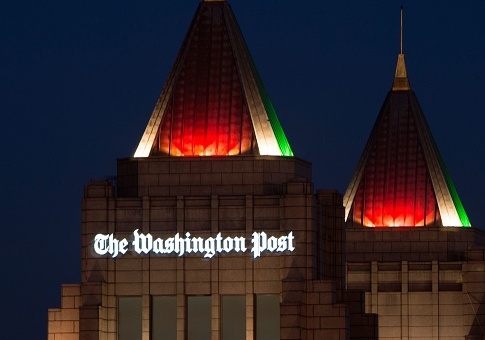A study conducted by Washington Post reporters uncovered evidence of a gender and racial pay gap at their own newspaper.
A contractual agreement between the Washington Post Newspaper Guild and the Post allowed the union to compile a report detailing how female reporters and editors as a group were paid less than their male counterparts. The analysis, released Wednesday, also found that people of color were paid less than white men even when controlling for age and job description.
"The pay disparity between men and women is most pronounced among journalists under the age of 40," the union said in a press release. "When adjusting for similar age groups, which in most cases is a good stand-in for years in journalism, it becomes clear that the pay disparity between men and women exists almost exclusively among employees under the age of 40."
The report also found racial disparities in the paper's performance evaluation results, which are a key metric for determining compensation.
"The Post tends to give merit raises based on performance evaluation scores, but those who score the highest are overwhelmingly white," it continues. "But in 85 percent of instances in which a 4 or higher [out of 5] was awarded to a salaried newsroom employee, that employee was white.... On the flip side, 37 percent of scores below 3 were given to employees of color in the newsroom (the newsroom is about 24 percent nonwhite)."
The full report, compiled by a team of dozens of Post reporters and led by Pulitzer Prize-winner Steven Rich, also contained testimonials of pay discrimination in the workplace. One female reporter described how she learned that "the man who previously held her job, a reporter of the same age with more managerial experience but a fraction of her experience at the Post, was making $50,000 more than her."
Another woman described learning that every single male journalist on her reporting team was paid more than her, "even though she’s been at the Post longer than all of them and has been working in journalism longer than most of them. One of the men on her team is paid more than $30,000 more than her."
In one bright spot for the paper, the report found that men and women on the commercial side of the business are paid about the same, though the median pay for employees of color was about 5 percent lower than their white employees. That disparity increases when adjusted for age, "suggesting that employees of color in commercial are paid less than their white peers despite having more experience."
The Post has run frequent editorials lamenting the existence of a wage gap in America.
In a statement to the Free Beacon, the Post said it is "committed to paying employees fairly for the work they perform, and we believe that we do so, taking into account relevant factors like position, years of experience, and performance. It is regrettable that the Guild published a report on pay that does not appear to accurately account for these and other relevant factors, which have nothing to do with race or gender."
"We believe the report is seriously flawed," they added. "It is disappointing that the Guild chose to issue it—the Post told the Guild before its release that we had many questions about their methodology."
